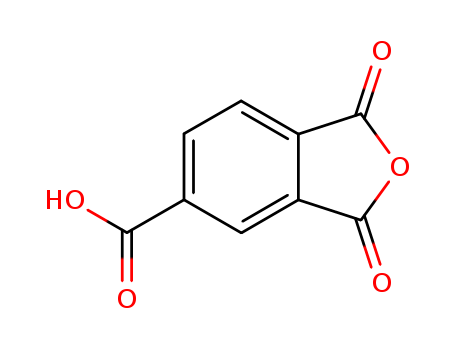- Product Details
Keywords
- Carboplatin
- 41575-94-4
- C6H12N2O4Pt
Quick Details
- ProName: Carboplatin
- CasNo: 41575-94-4
- Molecular Formula: C6H12N2O4Pt
- Appearance: White crystal
- Application: Pharmaceutical
- DeliveryTime: within 3-7 day
- PackAge: As required
- Port: shanghai or other
- ProductionCapacity: 5 Metric Ton/Month
- Purity: 99%
- Storage: keep in dry and cool condition
- Transportation: by sea or by air
- LimitNum: 10 Gram
Superiority
Changzhou Xuanming Chemical Co., Ltd. is dedicated to the technology development, manufacturing, import and export chemicals, which are specialized in pharmaceutical intermediates, pesticide intermediate, industry of fine chemicals and custom synthesis. Now, we enjoy good reputation among customers and take favorable market share in domestic and at abroad.
Changzhou Xuanming Chemical CO., LTD is located in Northern Jiangshu Industry Park, we have modern manufacture bases and some laboratories, which can supply the key intermediate for your projects, and short your synthesis scheme and supply you a reference compound for bioassay or a high purity analytical standard. We have been abided by “treat technology as first, quality as basis, customers as God, and be honest and sincere”. It is our final aim to provide environmental and high technological products and meet customers’ requirements according to keep effors on developing new chemical fields.
Changzhou Xuanming Chemical CO., LTD promises to help you with heart and soul.


Details
| Carboplatin Basic information |
| Product Name: | Carboplatin |
| Synonyms: | cbdca;cis-(1,1-cyclobutanedicarboxylato)diammineplatinum(ii);diammine-1,1-cyclobutanedicarboxylateplatinumi;nsc-241240;SP-4-2)-Diammine[1,1-cyclobutanedicar-boxylato-(2-)O,O’]platinum;cis-(1,1-cyclobutanedicarboxylato)diammineplatinum;diammine(1,1-cyclobutanedicarboxylato)platinum;1,1-CYCLOBUTANEDICARBOXYLATODIAMMINEPLATINUM(II) CARBOPLATIN |
| CAS: | 41575-94-4 |
| MF: | C6H12N2O4Pt |
| MW: | 371.25 |
| EINECS: | 255-446-0 |
| Product Categories: | -;Pharmaceutical material and intermeidates;Active Pharmaceutical Ingredients;Antitumors for Research and Experimental Use;Biochemistry;Classes of Metal Compounds;Cyclobutanes & Cyclobutenes;Pt (Platinum) Compounds;Simple 4-Membered Ring Compounds;Transition Metal Compounds;Intermediates & Fine Chemicals;Pharmaceuticals;anti-cancer;metal-ammine complexes;Inhibitors;API;NEMAZINE;Anti cancer;Anti can |
| Mol File: | 41575-94-4.mol |
|
|
|
| Carboplatin Chemical Properties |
| Melting point | 228-230°C |
| storage temp. | Store at RT |
| solubility | Sparingly soluble in water, very slightly soluble in acetone and in ethanol (96 per cent). |
| form | crystal |
| color | white |
| Water Solubility | Soluble in water. |
| Merck | 14,1822 |
| Stability: | Stable. Incompatible with strong oxidizing agents. |
| EPA Substance Registry System | Platinum, diammine[1,1-cyclobutanedi( carboxylato-.kappa.O)(2-)]-, (SP-4-2)-(41575-94-4) |
| Safety Information |
| Hazard Codes | T |
| Risk Statements | 46-61-20/21/22-42/43-20/21 |
| Safety Statements | 53-22-26-36/37/39-45 |
| RIDADR | 2811 |
| WGK Germany | 3 |
| RTECS | TP2300000 |
| HS Code | 28439000 |
| Hazardous Substances Data | 41575-94-4(Hazardous Substances Data) |
| Toxicity | LD50 in mice (mg/kg): 150 i.p., 140 i.v.; in rats (mg/kg): 85 i.v. (Lelieveld) |
| Carboplatin Usage And Synthesis |
| Description | Carboplatin (Brand name: Paraplatin) is a kind of chemotherapy medication used for the treatment of a series of cancers. It can be used for the treatment of various kinds of cancers including ovarian cancer, lung cancer, head and neck cancer, brain cancer, and neuroblastoma. Moreover, it may also be used for treating some types of testicular cancer. Carboplatin belongs to a kind of alkylating agent. It takes effect through three major mechanisms: (1) Attach the alkyl groups to the DNA bases, further causing DNA fragmentation so that DNA replication is inhibited; (2) Cause DNA damage through inducing the formation of cross-links which prevents DNA from being separated for synthesis or transcription; (3) Induce mispairing of the nucleotides leading to mutations. |
| References |
# # |
| Description | Carboplatin is a second generation, platinum-containing antineoplastic agent with significantly reduced nephro-, neuro-, and ototoxicity in comparison to cisplatin. It is effective in the treatment of advanced ovarian carcinoma of epithelial origin and small cell carcinoma of the lung. |
| Chemical Properties | White Crystals |
| Originator | Johnson Matthey (United Kingdom) |
| Uses | anthelmintic |
| Uses | antitumor agent, |
| Uses | Analog of Cisplatin with reduced nephrotoxicity. Antineoplastic |
| Indications |
Carboplatin (Paraplatin) is an analogue of cisplatin. Its plasma half-life is 3 to 5 hours, and it has no significant protein binding. Renal excretion is the major route of drug elimination. Despite its lower chemical reactivity, carboplatin has antitumor activity that is similar to that of cisplatin against ovarian carcinomas, small cell lung cancers, and germ cell cancers of the testis. Most tumors that are resistant to cisplatin are cross-resistant to carboplatin. The major advantage of carboplatin over cisplatin is a markedly reduced risk of toxicity to the kidneys, peripheral nerves, and hearing; additionally, it produces less nausea and vomiting. It is, however, more myelosuppressive than cisplatin. Other adverse effects include anemia, abnormal liver function tests, and occasional allergic reactions. |
| Brand name | Paraplatin (Bristol-Myers Squibb). |
| General Description | Carboplatin is available in 50-, 150-, and 450-mg vials for IVadministration in the treatment of ovarian cancer, bladdercancer, germ cell tumors, head and neck cancers, small celllung cancer, and NSCLC. Activation of the agent occurs byaquation in a manner similar to that seen for cisplatin. Thepresence of the chelating 1,1-cyclobutane-dicarboxylateslows this reaction 100-fold and reduces the toxicity of theagent. The sites of alkylation and mechanisms of resistanceare like those seen for cisplatin, and the two agents showcross-resistance. The agent is widely distributed upon IV administration but, because of its greater stability, it bindsslowly to plasma proteins, requiring 24 hours to reach 90%bound drug compared with 4 hours for cisplatin. The agent iseliminated in the urine with a terminal elimination half-lifeof 2 to 6 hours. Adverse effects include myelosuppression,which is dose limiting. Other adverse effects include renaltoxicity, nausea, vomiting, and peripheral neuropathy, butthese occur much less frequently than with cisplatin. |
| Pharmaceutical Applications |
Carboplatin, cis-diammine(1,1-cyclobutanedicarboxylato)platinum(II), is a second-generation platinum drug. Its structure is based on cisplatin with the difference that the chloride ligands are exchanged for a bidentate chelating ligand. A consequence is that carboplatin is less reactive than cisplatin and therefore is less nephrotoxic and orthotoxic than the parent compound. Unfortunately, it is more myelosuppressive than cisplatin, which reduces the patients’ white blood cell count and makes them susceptible to infections. Carboplatin was licensed by the FDA in 1989 under the brand name Paraplatin and has since then gained worldwide recognition. Carboplatin on its own or in combination with other anticancer agents is used in the treatment of a variety of cancer types including head and neck, ovarian, small-cell lung, testicular cancer and others. Carboplatin is a pale-white solid showing good aqueous solubility. The synthesis starts with potassium tetrachloroplatinate, which is reacted to the orange [PtI4]2- anion. |
| Biological Activity | Antitumor agent that forms platinum-DNA adducts. Causes intra- and interstrand DNA crosslinks blocking DNA replication and transcription. Enhances radiation-induced single-strand DNA breakage and displays lower nephrotoxicity than analog cisplatin (cis-Diaminodichloroplatinum ). |
| Veterinary Drugs and Treatments |
Like cisplatin, carboplatin may be useful in a variety of veterinary neoplastic diseases including squamous cell carcinomas, ovarian carcinomas, mediastinal carcinomas, pleural adenocarcinomas, nasal carcinomas and thyroid adenocarcinomas. Carboplatin’s primary use currently in small animal medicine is in the adjunctive treatment (post amputation) of osteogenic sarcomas. Its effectiveness in treating transitional cell carcinoma of the bladder has been disappointing; however, carboplatin may have more efficacy against melanomas than does cisplatin. Carboplatin, unlike cisplatin, appears to be relatively safe to use in cats. Carboplatin may be considered for intralesional use in conditions such as equine sarcoids or in treating adenocarcinoma in birds. Whether carboplatin is more efficacious than cisplatin for certain cancers does not appear to be decided at this point, but the drug does appear to have fewer adverse effects (less renal toxicity and reduced vomiting) in dogs. |










